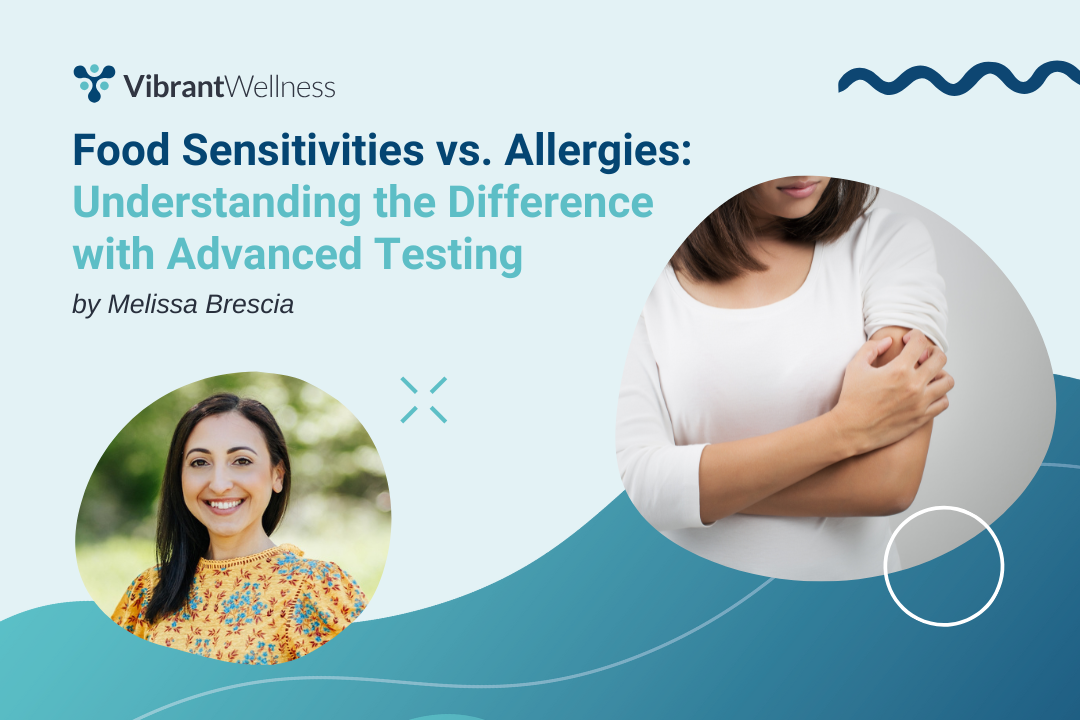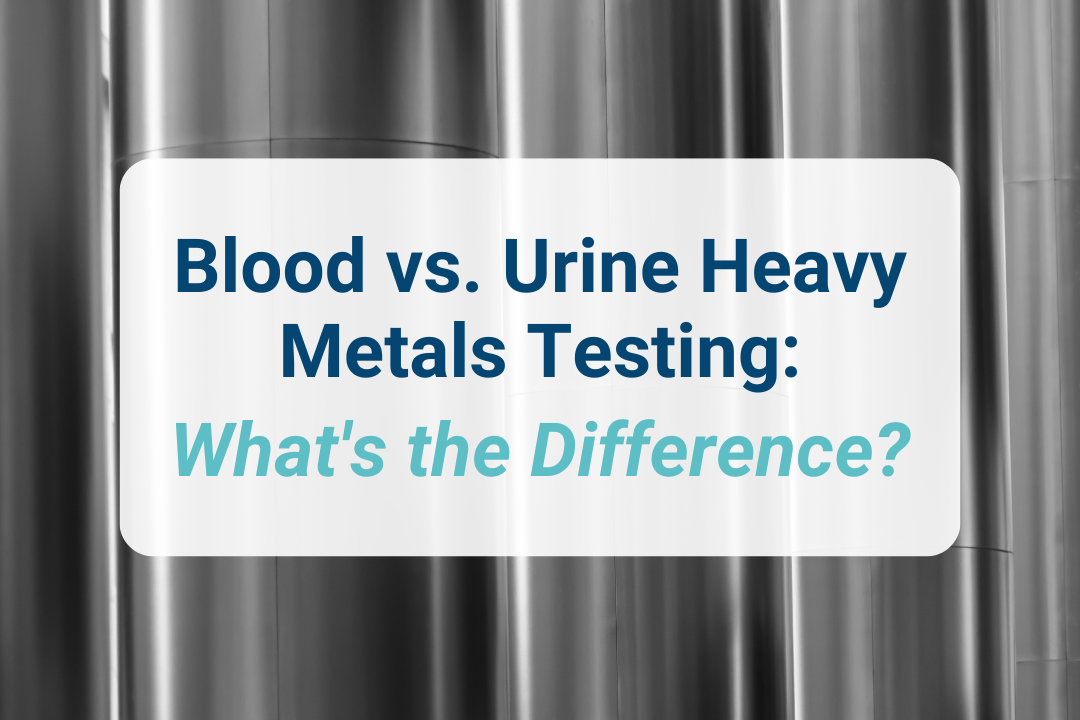Mycotoxins and Mold Toxicity: Key Players in Chronic Fatigue, Weight Gain, and More
Patients often present with symptoms such as chronic fatigue, brain fog, persistent headaches, sinus congestion, respiratory issues resembling allergies, or even unexplained weight gain.1
For providers, it’s critical to consider whether mold exposure or mycotoxins may be contributing to these seemingly unrelated health issues.
While these symptoms can be linked to many health conditions, testing for mold and mycotoxins is often a critical step in uncovering the root cause of unexplained, chronic health problems.
-2.png?width=800&height=300&name=2024%20-%20A%20Comprehensive%20Approach%20to%20Recurrent%20UTIs%20(7)-2.png)
Table of Contents
What Are Mycotoxins?
-1.png?width=800&height=300&name=2024%20-%20A%20Comprehensive%20Approach%20to%20Recurrent%20UTIs%20(15)-1.png)
Mycotoxins are toxic compounds produced by certain molds and fungi. Humans can be exposed to mycotoxins in two main ways: by inhaling mycotoxins in water-damaged environments or by consuming mold-contaminated foods. Once inside the body, these toxins can disrupt multiple physiological processes.
Symptoms of Mold Toxicity
-1.png?width=1080&height=405&name=2024%20-%20A%20Comprehensive%20Approach%20to%20Recurrent%20UTIs%20(10)-1.png)
Symptoms of mold toxicity can affect several systems in the body, including respiratory, neurological, and metabolic functions. Chronic fatigue, unexplained weight gain3, brain fog4, and sinus issues5 are some of the most common and often overlooked indicators of mold exposure. These symptoms are easily mistaken for other health issues and can persist for months or years if the underlying cause isn’t identified.2,3,4
Some symptoms to watch for include:
- Weight Changes: Unexplained weight gain or loss despite normal diet and exercise
- Cognitive Problems: Memory issues, brain fog, trouble concentrating
- Chronic Fatigue: Persistent tiredness, even after sleep
- Sinus & Respiratory Issues: Nasal congestion, shortness of breath, asthma
- Mood & Hormonal Imbalances: Anxiety, depression, irregular periods
Why Testing for Mycotoxins is Crucial
-1.png?width=1080&height=405&name=2024%20-%20A%20Comprehensive%20Approach%20to%20Recurrent%20UTIs%20(14)-1.png)
In my practice, I’ve seen countless clients who appear to be doing everything “right”—following a healthy diet, exercising regularly, and practicing good sleep hygiene—but still struggle with persistent symptoms like chronic fatigue, brain fog, and weight gain. These clients often report feeling as though something is “off,” but they can’t quite put their finger on it. Hormonal imbalances are a common issue in these cases, and mycotoxins like zearalenone (ZEN) can contribute by acting as endocrine disruptors.
Zearalenone and its metabolites, which are produced by certain fungi, can mimic estrogen and interfere with the body’s hormone production, potentially leading to issues like weight gain, infertility, and metabolic dysfunction.5
Here’s why testing for mycotoxins is a gamechanger:
- Mold exposure is often hidden. Unlike more obvious environmental triggers, mycotoxins can enter the body silently, either by inhalation or ingestion of contaminated foods. By the time clients present with symptoms, they may have been exposed to these harmful substances for months or even years without realizing it. Without testing, it’s incredibly difficult to pinpoint mold toxicity as the underlying cause.
- Conventional tests may not reveal mold exposure. While blood tests and other standard medical tests can help rule out common conditions, they often miss the key indicators of mold toxicity. Symptoms like unexplained weight gain or brain fog are non-specific and can be attributed to any number of health conditions. Mycotoxin testing is the only way to definitively determine whether mold is causing the problem. Mycotoxin testing offers crucial information for the root cause of unexplained symptoms that have resisted traditional treatments. By detecting the presence of specific mycotoxins, this test can reveal whether mold toxicity is playing a role in your client’s health issues. Without testing, you may continue treating symptoms with limited success, while the true source—mycotoxin exposure—remains undetected.

How is Mycotoxin Testing Performed?
The Vibrant Wellness Mycotoxins Test is a simple and non-invasive test that detects 29 of the most common mycotoxins produced by molds and fungi. The test can be done at home with a urine sample, and once processed, it provides actionable data on a client's exposure to these harmful toxins. The results can help determine whether mold toxicity is contributing to a client's symptoms and guide appropriate treatment.
Case Study: Chronic Fatigue and Weight Gain Due to Mycotoxins
-1.png?width=1080&height=405&name=2024%20-%20A%20Comprehensive%20Approach%20to%20Recurrent%20UTIs%20(11)-1.png)
A client came to me with chronic fatigue, weight gain, and persistent respiratory issues, despite doing everything "right." She maintained a healthy diet, exercised regularly, and stuck to a consistent sleep schedule. Yet, she wasn’t losing weight and felt generally unwell.
Initially, I suspected gut health issues and ordered a Gut Zoomer test, which analyzes gut bacteria, yeast, viruses, and parasites, along with digestive and inflammatory markers. The results showed malabsorption, food sensitivities, and low gut diversity. While we worked on improving her gut health with a Mediterranean diet, exercise, and other lifestyle changes, after six weeks, her symptoms persisted—and she even gained more weight.
It was only when I started considering environmental factors, such as mold exposure, that I recommended mycotoxin testing. The results were a wake-up call. Her high mycotoxin levels—specifically Ochratoxin A and Deoxynivalenol (DON)—were the key contributors to her ongoing health issues, including leptin resistance and inflammation, both of which were exacerbating her weight gain.
What Mycotoxin Testing Revealed
-1.png?width=1080&height=405&name=2024%20-%20A%20Comprehensive%20Approach%20to%20Recurrent%20UTIs%20(12)-1.png)
In the case of my client, the mycotoxin test revealed high levels of Ochratoxin A, which is produced by Aspergillus and Penicillium molds. Ochratoxin A can interfere with leptin, the hormone that regulates hunger and fat storage. By disrupting leptin signaling, it can contribute to leptin resistance, making it difficult for the body to lose weight. Additionally, we found Deoxynivalenol (DON), a mycotoxin linked to hormone disruption and inflammation, as well as Aflatoxins, which can affect liver function and contribute to metabolic disturbances.
Mycotoxin Removal and Detoxification
Once the mycotoxins were identified, the next step was to address the exposure and support the body in eliminating these toxins. Removing the source of mold exposure is critical and typically involves repairing leaks, improving ventilation, and addressing water damage in living and workspaces. In my client’s case, she was able to shift her work hours to virtual while she found a new office space.
Supporting the body’s natural detoxification pathways is also essential for clearing mycotoxins from the system. Strategies like activated charcoal, glutathione supplementation, and detox support formulas (including ingredients like NAC and green tea extract) are key tools in this process.
-1.png?width=800&height=300&name=2024%20-%20A%20Comprehensive%20Approach%20to%20Recurrent%20UTIs%20(8)-1.png)
Why This Matters: The Bottom Line
Weight management and chronic health issues are much more complex than “calories in, calories out.” Mold toxicity can quietly contribute to conditions like leptin resistance, inflammation, and hormonal imbalances, all of which interfere with metabolism and weight management.
For many of the clients I work with, identifying mycotoxin exposure is often the missing piece of the puzzle. Once mold toxicity is treated, many clients see a significant improvement in their symptoms—improved energy, reduced inflammation, better cognitive function, and, importantly, successful weight management. Testing for mycotoxins is the most effective way to uncover this hidden problem and begin the path to true healing.
About the Author
Melissa is a passionate Holistic Nutrition Coach dedicated to empowering individuals on their journey to true health. Her approach integrates functional medicine, nutrition science, and personalized mindwork to promote physical, mental, and emotional balance.
Specializing in addressing complex health challenges such as gut imbalances and chronic conditions, Melissa focuses on breaking down overwhelming obstacles into manageable, actionable steps.
For those with long-standing health and dietary concerns, her practice emphasizes the interconnectedness of mind, body, and spirit to foster healthier relationships with food and oneself, leading to profound, lasting transformations. By combining evidence-based interventions with cutting-edge diagnostics, Melissa crafts personalized strategies that empower clients to reclaim their health and vitality. Learn more about Melissa's practice here.
References:
- Lichtenstein JH, Hsu YH, Gavin IM, et al. Environmental mold and mycotoxin exposures elicit specific cytokine and chemokine responses. PLoS One. 2015;10(5) doi:10.1371/journal.pone.0126926. PMCID: PMC4444319; PMID: 26010737.
- Malvandi AM, Shahba S, Mehrzad J, Lombardi G. Metabolic disruption by naturally occurring mycotoxins in circulation: a focus on vascular and bone homeostasis dysfunction. Front Nutr. 2022;9:915681.
- Kraft S, Buchenauer L, Polte T. Mold, mycotoxins and a dysregulated immune system: a combination of concern? Int J Mol Sci. 2021;22(22):12269. doi:10.3390/ijms222212269. PMCID: PMC8619365; PMID: 34830149.
- Harding CF, Pytte CL, Page KG, et al. Mold inhalation causes innate immune activation, neural, cognitive and emotional dysfunction. Brain Behav Immun. 2020;87:218-228. doi:10.1016/j.bbi.2019.11.006. PMCID: PMC7231651; PMID: 31751617.
- Demaegdt H, Daminet B, Evrard A, et al. Endocrine activity of mycotoxins and mycotoxin mixtures. Toxins (Basel). 2017;9(7):220. doi:10.3390/toxins9070220.
Regulatory Statement:
The information presented in case studies have been de-identified in accordance with the HIPAA Privacy protection.
The general wellness test intended uses relate to sustaining or offering general improvement to functions associated with a general state of health while making reference to diseases or conditions. This test has been laboratory developed and its performance characteristics determined by Vibrant America LLC and Vibrant Genomics, a CLIA-certified and CAP-accredited laboratory performing the test. The lab tests referenced have not been cleared or approved by the U.S. Food and Drug Administration (FDA). Although FDA does not currently clear or approve laboratory-developed tests in the U.S., certification of the laboratory is required under CLIA to ensure the quality and validity of the test.
 By
By



